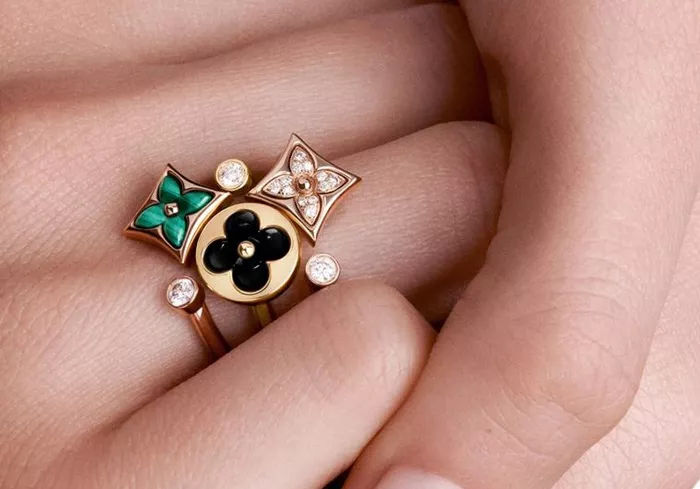Price is the monetized expression of design philosoph.The price of emerald-cut amethyst necklace is essentially the designer’s art of balancing “material value” and “spiritual value.
Gem quality: the natural gene of amethyst
The value of amethyst is determined by color, clarity, carat weight and cutting precision, which directly affects the “visual impact” of the necklace:
Color grading
The top grade “Siberian Purple” has a rich royal purple tone (around 420nm main wavelength), no brown/gray subtone, and can cost $80-150/ carat
The common commercial grade is mostly lavender ($10-30/ carat), and the uneven distribution of the color bands causes clouded areas
Heat treatment optimization (heating light-colored amethyst to 470°C for color enhancement) increases saturation but reduces the premium space by 5-15%
Clarity feature
Type II gem properties make amethyst commonly contain liquid inclusions or healed fissures
VVS grade (naked eye flawless) material scarcity drives up the unit price and is often used for high-end customization
The VS-SI class (small inclusions) dominates the market and requires a Mosaic to cover the location of defects
Carat weight
Step cutting of emerald cuts results in higher weight loss (raw stone loss rate of about 60-70%)
The price of pure amethyst over 15 carats has increased exponentially due to crystal growth restrictions
Case comparison
5 carat medium quality amethyst bare stone costs about $120
The same weight of top quality bare stone up to $600+
Cutting process: technical realization of geometric aesthetics
The demanding proportions and symmetry of the emerald cut (58 facets) result in significantly higher labor costs than the standard round bright cut:
Cutting accuracy cost
The ideal aspect ratio is 1.3:1 to 1.5:1, and the pavilion Angle is 42°-43° to ensure light penetration
The manual cutting master takes 8-12 hours per piece and costs $200-400 per hour
Machine batch cutting cost can be reduced to $20-50/ piece, but prone to “faceted blur” or “window effect”
Loss control technique
Step cutting requires accurate calculation of the crystal direction of the raw stone to avoid color differences caused by polychromatism
High-end studios reduce material waste by 20-30% by pre-predicting cutting plans with 3D modeling
Edge processing detail
Beveled Edge increases light refraction and requires an additional 2 hours of hand sanding
Untreated edges tend to produce micro-notches in wearing, affecting long-term value
Proportion of process cost
For necklaces under $500, cutting costs account for about 15-25%; High-end custom models can reach more than 40%
The precious metal framework: the double game of bearing and aesthetics
The choice of metal material directly affects the structural strength, wearing comfort and style expression of the necklace:
- Material unit price ($/ g) feature compatibility analysis
- 925 silver 1.2-1.5 easy oxidation color, suitable for fast fashion items
- 45-50 warm tones of 14K gold enhance the mystery of amethyst and require regular polishing
- Platinum (Pt950) 30-35 cool tone highlights the modern sense, the best durability
- Titanium plating 8-12 lightweight sports, but can not repair scratches
- Structural engineering considerations
The fragile waist of the emerald cut needs to be reinforced with a claw (at least 4 claws, the claw thickness ≥0.8mm).
Hollow backboard design can reduce weight, but increase the loss of 15-20% gold material
Design added value: the transition from commodity to artwork
The designer brand premium results from three levels of creative labor:
Narrative design
For example, vines with claws inspired by the Art Nouveau movement require additional sculpting hours
Historical replicas, such as Victorian mourning jewellery, command a cultural premium
Technological innovation
Invisible magnetic buckle system, adjustable chain length mechanism and other patented structures
Laser microengraving encodes signatures or customized messages
Implantation of emotional value
Birthstone Custom Service (February Birthstone)
Energy Healing Concept Package (Chakra Balance Theory)
Premium range case
Mass production base model: Material cost ×1.8-2.5
Designer Limited edition: Material cost x 5-10
Economic impact of production mode
There are significant differences in the cost structure between large-scale production and manual customization:
Mass production advantage
Wax casting reduces gold consumption per piece (8-12% savings)
Automatic polishing increases efficiency by 300%
Subject to minimum Order quantity (MOQ) risk
Handmade custom features
$150-300 per piece
Personalized adjustment time for lost wax casting (3-5 test casts)
Senior craftsmen earn $50-80 an hour
Production mode cost comparison
1000pcs order: $25-40 per piece processing fee
Single piece customization: Processing fee $200-500
Market positioning strategy matrix
Products in different price segments need to match differentiated value propositions:
- Price range Target customer group Core selling points Typical sales channels
- $50-200 Generation Z fast fashion consumer trend color matching, lightweight design e-commerce platform, pop-up store
- $200-800 Middle Class Gift Market certificate protection, classic style department store, online boutique
- $800-2500 Collects Investor Master autographs, rare materials auction houses, galleries
- $2500+ High net worth individual full customization service, cross-border art joint private jewelry consultant
Consumer psychology pricing skills
The final transaction price is governed by psychological anchoring effect and perceived value:
Price with “dessert” strategy
497
Compare with
497 activates the left-digit effect compared to 500.
799
with
A $1 difference between 799 and 800 increases conversion rates by 12%
Scarcity suggestion
“Limited to 50 pieces worldwide” can increase the price by 30%
“Mine closure souvenir” creates space for emotional premium
Conclusion
Amethyst’s affordability compared to precious gems makes it a popular choice for elegant yet accessible jewelry. Always verify authenticity and retailer reputation before purchasing.
Relateed topics:
Is Pink Amethyst Rare? Exploring Its Uniqueness
What Is Pink Amethyst Made Of? A Complete Guide
Does Amethyst Really Help You Sleep?


